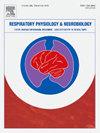Revisiting Acute Respiratory Distress Syndrome ventilation management: Time for a paradigm shift focusing on tidal volume
IF 1.6
4区 医学
Q3 PHYSIOLOGY
引用次数: 0
Abstract
Acute Respiratory Distress Syndrome (ARDS) remains a critical challenge in intensive care medicine, with persistently high mortality despite decades of research and advancements in supportive therapies. Mechanical ventilation, particularly low tidal volume (VT) strategies, has become the cornerstone of ARDS management; however, emerging evidence suggests that a uniform application of these approaches may not be universally beneficial. This viewpoint critically examines the evolution of ARDS ventilation strategies, from high VT methods to protective ventilation protocols centered on reduced VT and plateau pressures. It explores the limitations of current guidelines, highlighting how global parameters such as VT and driving pressure (ΔP) may inadequately capture the complex and heterogeneous pathophysiology of ARDS. Concepts like mechanical power, compliance-based ventilation, and transpulmonary pressure offer promising avenues for more personalized care but remain underutilized in clinical practice. Additionally, this viewpoint underscores the significance of heart-lung interactions and the impact of ventilator settings on cardiovascular function, further complicating one-size-fits-all approaches. Ultimately, this work calls for a reassessment of existing paradigms, advocating for individualized, physiology-driven strategies that move beyond population-based protocols to better address the nuanced needs of ARDS patients.
重新审视急性呼吸窘迫综合征的通气管理:是时候将重心转移到潮气量上了
急性呼吸窘迫综合征(ARDS)仍然是重症监护医学的一个重大挑战,尽管数十年的研究和支持治疗取得了进展,但其死亡率仍然很高。机械通气,特别是低潮气量(VT)策略,已成为ARDS管理的基石;然而,新出现的证据表明,这些方法的统一应用可能并不普遍有益。这一观点批判性地考察了ARDS通气策略的演变,从高VT方法到以降低VT和平台压力为中心的保护性通气方案。它探讨了当前指南的局限性,强调了诸如VT和驱动压力(ΔP)等全局参数可能无法充分捕捉ARDS复杂和异质性的病理生理。机械动力、顺应性通气和跨肺压力等概念为更个性化的护理提供了有希望的途径,但在临床实践中仍未得到充分利用。此外,这一观点强调了心肺相互作用的重要性以及呼吸机设置对心血管功能的影响,使一刀切的方法进一步复杂化。最后,这项工作呼吁重新评估现有的范例,倡导个性化的、生理驱动的策略,超越基于人群的方案,更好地解决ARDS患者的细微需求。
本文章由计算机程序翻译,如有差异,请以英文原文为准。
求助全文
约1分钟内获得全文
求助全文
来源期刊
CiteScore
4.80
自引率
8.70%
发文量
104
审稿时长
54 days
期刊介绍:
Respiratory Physiology & Neurobiology (RESPNB) publishes original articles and invited reviews concerning physiology and pathophysiology of respiration in its broadest sense.
Although a special focus is on topics in neurobiology, high quality papers in respiratory molecular and cellular biology are also welcome, as are high-quality papers in traditional areas, such as:
-Mechanics of breathing-
Gas exchange and acid-base balance-
Respiration at rest and exercise-
Respiration in unusual conditions, like high or low pressure or changes of temperature, low ambient oxygen-
Embryonic and adult respiration-
Comparative respiratory physiology.
Papers on clinical aspects, original methods, as well as theoretical papers are also considered as long as they foster the understanding of respiratory physiology and pathophysiology.

 求助内容:
求助内容: 应助结果提醒方式:
应助结果提醒方式:


